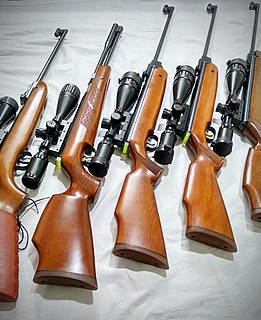 W
WAn air gun or airgun, is a gun that fires projectiles pneumatically with compressed air or other gases that are mechanically pressurized without involving any chemical reactions, in contrast to a firearm, which pressurizes gases chemically via oxidation of combustible propellants that generates propulsive energy by breaking molecular bonds.
 W
WAn arrow is a fin-stabilized projectile launched by a bow. A typical arrow usually consists of a long, stiff, straight shaft with a weighty arrowhead attached to the front end, multiple fin-like stabilizers called fletchings mounted near the rear, and a slot at the rear end called nock for engaging the bowstring. A container or bag carrying additional arrows for convenient reloading is called a quiver.
 W
WAn arrowhead or point is the usually sharpened and hardened tip of an arrow, which contributes a majority of the projectile mass and is responsible for impacting and penetrating a target, as well as to fulfill some special purposes such as signaling.
 W
WAustralian Aboriginal artefacts include a variety of cultural artefacts used by Aboriginal Australians. Most Aboriginal artefacts were multi-purpose and could be used for a variety of different occupations. Spears, clubs, boomerangs and shields were used generally as weapons for hunting and in warfare. Watercraft technology artefacts in the form of dugout and bark canoes were used for transport and for fishing. Stone artefacts include cutting tools and grinding stones to hunt and make food. Coolamons and carriers such as dillybags, allowed Aboriginal peoples to carry water, food and cradle babies. Message sticks were used for communication, and ornamental artefacts for decorative and ceremonial purposes. Aboriginal children’s toys were used to both entertain and educate.
 W
WA BB gun is a type of air gun designed to shoot metallic spherical projectiles called BBs, which are approximately the same size as BB-size lead birdshot used on shotguns. Modern BB guns usually have a smoothbore barrel with a 4.5 mm (0.177 in) caliber, and use steel balls that measure 4.3–4.4 mm (0.171–0.173 in) in diameter and 0.33–0.35 g (5.1–5.4 gr) in weight, usually zinc- or copper-plated for corrosion resistance. Some manufacturers still make the slightly larger traditional lead balls that weigh around 0.48–0.50 g (7.4–7.7 gr), which are generally intended for use in rifled barrels.
 W
WA bear spear was a medieval type of spear used in hunting for bears and other large animals. The sharpened head of a bear spear was enlarged and usually took the form of a bay leaf. Right under the head there was a short crosspiece that helped fix the spear in the body of an animal and keep it at a distance from the hunter.
 W
WA birdcage is a cage designed to house birds as pets.
 W
WA hunting blind (US), hide or machan is a concealment device or shelter for hunters or gamekeepers, designed to reduce the chance of detection by animals. There are different types of blinds for different situations, such as deer blinds and duck blinds. Some are exceedingly simple, while others are complex. The legality of various kinds of blinds may vary according to season, state and location.
 W
WA bolas is a type of throwing weapon made of weights on the ends of interconnected cords, used to capture animals by entangling their legs. Bolas were most famously used by the gauchos, but have been found in excavations of Pre-Columbian settlements, especially in Patagonia, where indigenous peoples used them to catch 200-pound guanaco and ñandú (birds). The Mapuche and the Inca army used them in battle. Mapuche warriors used bolas in their confrontations with the Chilean Army during the Occupation of Araucanía (1861–1883).
 W
WA boomerang is a thrown tool, typically constructed as a flat airfoil, that is designed to spin about an axis perpendicular to the direction of its flight. A returning boomerang is designed to return to the thrower. It is well-known as a weapon used by some Aboriginal Australian peoples for hunting.
 W
WThe bow and arrow is a ranged weapon system consisting of an elastic launching device (bow) and long-shafted projectiles (arrows).
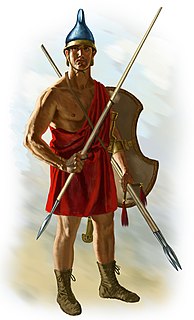 W
WDarts are airborne ranged weapons. They are designed to fly such that a sharp, often weighted point will strike first. They can be distinguished from javelins by the presence of fletching and a shaft that is shorter and/or more flexible. Darts can be propelled by hand or with the aid of a hand-held implement. They can be distinguished from arrows because they are too short to be used in a bow.
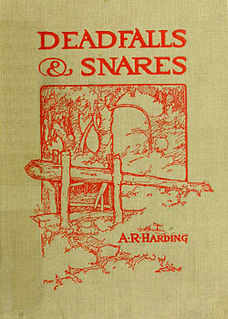 W
WDeadfalls and Snares: A Book of Instruction for Trappers About These and Other Home-Made Traps is a 1907 book by A. R. Harding.
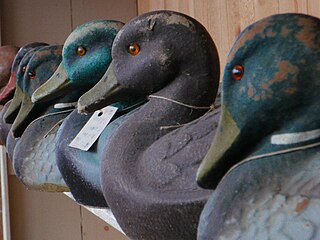 W
WA decoy is usually a person, device, or event which resembles what an individual or a group might be looking for, but not really is. Decoys have been used for centuries most notably in game hunting, but also in wartime and in the committing or resolving of crimes.
 W
WAn elephant gun is a large caliber gun, rifled or smoothbore, originally developed for use by big-game hunters for elephant and other big game. Elephant guns were black powder muzzle-loaders at first, then black powder express rifles, then later used smokeless powder cartridges.
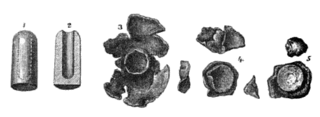 W
WThe term express was first applied to hunting rifles and ammunition beginning in the middle 19th century, to indicate a rifle or ammunition capable of higher than typical velocities. The early express cartridges used a heavy charge of black powder to propel a lightweight, often hollow point bullet, at high velocities to maximize point blank range. Later the express cartridges were loaded with nitrocellulose-based gunpowder, leading to the Nitro Express cartridges, the first of which was the .450 Nitro Express.
 W
WA gun rack, rifle rack or arm rack is a rack for storing firearms such as rifles and pistols. The rack is typically equipped with locks to prevent theft or improper use. Hunting vehicles such as shooting brakes are equipped with such racks to keep the weapons secure and prevent accidental discharge. Gun Racks can also be mounted onto vehicle transportation and can carry one or more guns safely and securely. These gun racks will hold your shotgun or rifle on a Utility Terrain Vehicle (UTV), All Terrain Vehicle (ATV), Side by Side, Swat Vehicles, Armored Trucks and or Golf Carts.
 W
WGamo Outdoor S.L.U, or simply Gamo, is a Spanish airgun manufacturer based in Barcelona, Spain, and is the largest producer of airguns in Europe and the largest producer of airgun pellets in the world. The company was founded in 1959, as El Gamo, and airgun production first started in 1961. Today Gamo products include air rifles, air pistols, ammunition and optics. They produce primarily airguns intended for mass market.
 W
WThe howdah pistol was a large-calibre handgun, often with two or four barrels, used in Africa and India from the beginning of the nineteenth century, and into the early twentieth century, during the British Empire era. It was intended for defence against lions, tigers and other dangerous animals that might be encountered in remote areas. Multi-barreled breech-loading designs were later favoured over contemporary revolvers, due to their higher velocity and faster reloading potential.
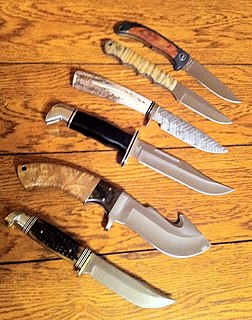 W
WA hunting knife is a knife used during hunting for preparing the game to be used as food: skinning the animal and cutting up the meat. It is different from the hunting dagger which was traditionally used to kill wild game.
 W
WA hunting sword is a type of single-handed short sword that dates to the 12th Century but was used during hunting parties among Europeans from the 17th to the 19th centuries. A hunting sword usually has a straight, single-edged, pointed blade typically no more than 36 inches long. This sword was used for finishing off game in lieu of using and wasting further shot. Adopted by many Europeans, and in past centuries sometimes worn by military officers as a badge of rank, hunting swords display great variety in design. Some hilts featured a thin knuckle-bow to protect the fingers. Others sported a serrated saw edge on the back of the blade. Still others had small matchlock pistols built into the hilt that originated in the early 18th century, with deep firing grooves cut into the fuller of the blade.
 W
WThe Lancaster Pistol was a multi-barrelled handgun produced in England in the mid-late 19th century, chambered in a variety of centrefire pistol calibres—chiefly .38 S&W, .450 Adams, .455 Webley, and .577 inch. The designer, London gunsmith Charles Lancaster, began his career in 1847 as an apprentice to his father, Charles Sr. During the 1850s he invented oval bore rifling and the gas check bullet.
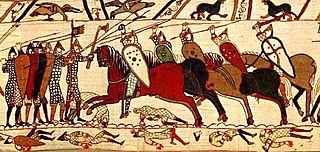 W
WA lance is a pole weapon designed to be used by a mounted warrior or cavalry soldier (lancer). During the periods of classical and medieval warfare, it evolved into being the leading weapon in cavalry charges, and was unsuited for throwing or for repeated thrusting, unlike similar weapons of the javelin and pike family typically used by infantry. Lances were often equipped with a vamplate – a small circular plate to prevent the hand sliding up the shaft upon impact. Though best known as a military and sporting weapon carried by European knights, the use of lances was widespread throughout Asia, the Middle East, and North Africa wherever suitable mounts were available. As a secondary weapon, lancers of the medieval period also carried daggers, swords, axes, hammers, or maces for use in hand-to-hand combat, since the lance was often a one-use-per-engagement weapon; assuming the lance survived the initial impact intact, it was usually too long, heavy, and slow to be effective against opponents in a melee.
 W
WA mantrap is a mechanical physical security device for catching poachers and trespassers. They have taken many forms, the most usual being like a large foothold trap, the steel springs being armed with teeth which met in the victim's leg. Since 1827, they have been illegal in England, except in houses between sunset and sunrise as a defence against burglars.
 W
WMicroblade technology is a period of technological development marked by the creation and use of small stone blades, which are produced by chipping silica-rich stones like chert, quartz, or obsidian. Blades are a specialized type of lithic flake that are at least twice as long as they are wide. An alternate method of defining blades focuses on production features, including parallel lateral edges and dorsal scars, a lack of cortex, a prepared platform with a broad angle, and a proximal bulb of percussion. Microblades are generally less than 50 mm long in their finished state.
 W
WNosler, Inc. is an American manufacturing company based in Bend, Oregon, known for producing ammunition and handloading components and specializing in high performance hollow point and soft point hunting bullets. The current companies also include subsidiaries Nosler Custom and Nosler Reloading. Nosler's contributions to shooting sports include both polymer-tipped bullet designs and new manufacturing techniques used in their production.
 W
WA pellet is a non-spherical projectile designed to be shot from an air gun, and an airgun that shoots such pellets is commonly known as a pellet gun. Air gun pellets differ from bullets and shot used in firearms in terms of the pressures encountered; airguns operate at pressures as low as 50 atmospheres, while firearms operate at thousands of atmospheres. Airguns generally use a slightly undersized projectile that is designed to obturate upon shooting so as to seal the bore, and engage the rifling; firearms have sufficient pressure to force a slightly oversized bullet to fit the bore in order to form a tight seal. Since pellets may be shot through a smoothbore barrel, they are often designed to be inherently stable, much like the Foster slugs used in smoothbore shotguns.
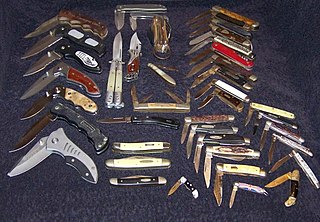 W
WA pocketknife is a foldable knife with one or more blades that fold into the handle. It is also known as a jackknife (jack-knife) or a penknife, though a penknife may also be a specific kind of pocketknife. A typical blade length is 5 to 15 centimetres. Pocketknives are versatile tools, and may be used for anything from opening an envelope, to cutting twine, slicing a piece of fruit to a means of self-defense.
 W
WA quiver is a container for holding arrows, bolts, darts, or javelins. It can be carried on an archer's body, the bow, or the ground, depending on the type of shooting and the archer's personal preference. Quivers were traditionally made of leather, wood, furs, and other natural materials, but are now often made of metal or plastic.
 W
WA sinkbox is a specialized hunting blind used by waterfowl hunters. It consists of a weighted, partially submerged enclosure large enough to hold one or more hunters and suspended from a floating platform. It is placed into calm water so that the hunter may wait with the waterline at approximately shoulder height.
 W
WThe skinner knife or skinning knife is a professional tool for a skinner. Typically a skinner knife has wide, short blade. The edge is strong and does not have much flexibility or spring. Skinning knives are more a hunting tool than a weapon.
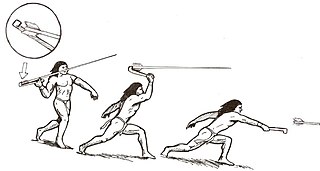 W
WA spear-thrower, spear-throwing lever or atlatl is a tool that uses leverage to achieve greater velocity in dart or javelin-throwing, and includes a bearing surface which allows the user to store energy during the throw.
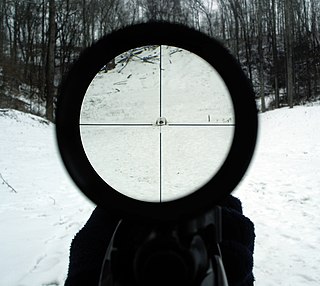 W
WA telescopic sight, commonly called a scope for short, is an optical sighting device based on a refracting telescope. It is equipped with some form of a referencing pattern – known as a reticle – mounted in a focally appropriate position in its optical system to provide an accurate point of aim. Telescopic sights are used with all types of systems that require magnification in addition to reliable visual aiming, as opposed to non-magnifying iron sights, reflector (reflex) sights, holographic sights or laser sights, and are most commonly found on long-barrel firearms, particularly rifles, usually via a scope mount. The optical components may be combined with optoelectronics to form a digital night scope or a "smart scope".